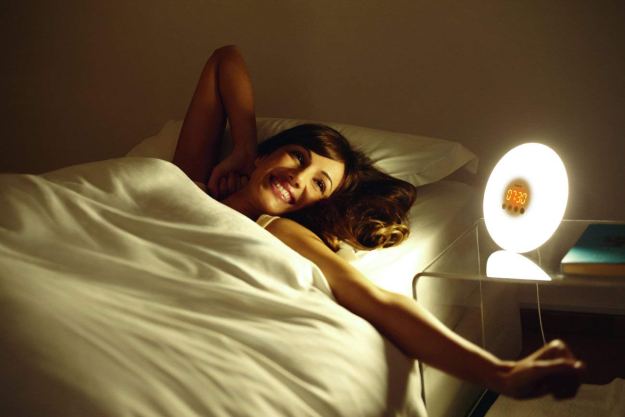Smart lights are a great way to enhance home security. Being able to flip on the lights remotely or automatically, you can give the impression that someone is home and expose potential intruders. It’s possible to link your smart lights to outdoor motion sensors so that they flip on as soon as it detects any motion. Let’s take a look into how it all works.
Can you put motion sensors outside?
There are absolutely motion sensors that are meant to work outside. Many smart home doorbells and security cameras have built-in motion sensors that can connect to your smart lights. The one catch is that since motion sensors need to communicate with lights, they need a power source. This source can be wired, or battery-driven. For example, Hue offers a battery-powered motion sensor that can activate your home’s lights when triggered.
Can you add a motion detector to an existing light?
Yes, there are add-on motion sensors that you can attach to existing lights.
The easiest way to install a new motion sensor to an existing outdoor light is to use a light socket adapter. You would place the adapter between your current light bulb and your socket. You don’t have to worry about handling any wiring. It also means you don’t need to upgrade to smart lights to provide motion activation since the socket adapter handles the triggering. This socket adapter from Wyze is especially promising.
How do you wire a motion sensor to an existing outdoor light?
Specific instructions for wiring up a motion sensor will vary by brand. Be sure to check the manufacturer’s instructions on specifics. If you aren’t using a socket adapter and will need to do the wiring, here are the general steps.
- Turn off the power to your light from the circuit breaker panel.
- Remove the cover on the outdoor light.
- Remove the insert where the light meets the wall or other mount.
- Use a voltage tester to ensure the power is off.
- Follow the instructions in your kit to connect the wires from your light’s power source to the motion sensor.
- Feed the cabling back into its original location.
- Replace the light’s insert and cover.
- Mount the motion sensor at the desired location.
- Turn on the power at the circuit breaker panel.
- Calibrate your motion detector to the correct angle and sensitivity.
What’s the difference between a photocell and a motion sensor?
A photocell detects ambient light so lights turn on when it gets dark. A motion sensor activates the light when it detects something moving within its field of view.
Photocells work with a resistor that changes its conductivity based on how many photons are hitting it. When contact is made with more photons, it increases the electrical flow, which can then trigger actions.
Motion sensors work similarly, only with heat. Most motion sensors rely on a pyroelectric material that activates when it detects a change in temperature. The sensor is separated into two parts. If the infrared heat levels detected by each aren’t identical, it’s because something has moved into an area visible to one sensor, but not the other. This difference means movement, at which point the motion detector activates. The nice part about these passive infrared motion detection systems is that they won’t fire for just any movement – it has to be something that emits heat. It also doesn’t use a lot of power since it’s simply receiving ambient heat, as opposed to systems like night vision cameras, which have to fire infrared light as well as receive it.
Smart home cameras detect movement a little differently. They’re capturing video on an ongoing basis, so when the pixels of that imagery change beyond a certain threshold, the camera detects movement. Additional intelligence can allow smart cameras to block out certain kinds of movement from activating the sensor, or to recognize who is moving (pets or humans, for example). Once properly trained, computer vision like this can be more specific than passive infrared.
How do you install outdoor motion lights?
Some lights have motion sensors already built into them. For example, Ring has a great outdoor light with motion sensor that ties into the rest of its smart home ecosystem. Installing these lights will vary from manufacturer to manufacturer, but there are a few basic steps you can take across the board. The steps are not that different from installing a standard light fixture.
- Turn off the power at the circuit breaker panel to the area you’ll be installing the light. Use a voltage tester to confirm the power is off before rewiring anything.
- Determine placement of the new outdoor motion light.
- Prepare the placement area. If it’s a new location, install a box for the fixture to be mounted on and drill a hole into the wall there for cabling. If the new outdoor motion light is replacing an existing light, remove the old one and skip to step 9.
- Identify the closest power outlet to where you want to install the outdoor motion light.
- Remove the plate and outlet.
- Assemble the light fixture.
- Add putty around the fixture location to weather seal it.
- Run the new outdoor motion light’s cable through the hole and guide it towards the chosen outlet.
- Connect matching neutral (white) and hot (black) cables from the outdoor motion light to your home power supply.
- Drill the new outdoor motion light into your target location.
- Turn the power back on at the circuit breaker panel.
- Calibrate your motion detector to the correct angle and sensitivity.
Remember, these are general steps for installing a motion sensor to an existing light and installing outdoor motions lights that will vary by product. So be sure to read and follow the manufacturer’s instructions. If the steps are too much, hire a professional to do the installation.
Hopefully, this gives you a jumping-off point for adding motion sensing lights to the outside of your home. Whether you already have smart lights, or aren’t comfortable dealing with electrical wiring, there are a range of solutions available to accommodate your setup.
Editors' Recommendations
- How to save Ring Doorbell video without a subscription
- How to use the Google Home app on a computer
- Can you use a Blink Outdoor Camera without a subscription?
- The 5 best smart padlocks and Bluetooth padlocks in 2024
- The Twinkly Matrix is a smart LED curtain with 500 mappable lights




